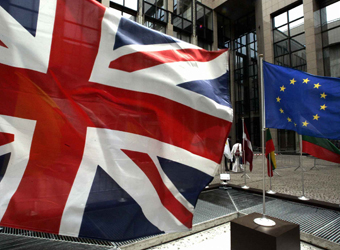British retail sales recorded their biggest quarterly drop in seven years during the first three months of 2017, as rising prices since last year’s Brexit vote put more pressure on consumers, official data showed Friday.
Sterling fell to a day’s low after the weaker-than-expected figures, extending a decline that started after it reached its session peak around 0800 GMT.
Retail sales volumes contracted 1.4 percent in the first quarter after rising 0.8 percent in the last three months of 2016, the Office for National Statistics said.
It was the biggest quarterly decline since the first quarter of 2010, and is likely to reinforce the view among many economists that household spending – the main driver of the economy – is now slowing sharply.
That may prove a concern for Prime Minister Theresa May, who earlier this week unexpectedly called for an early national election, in an effort to strengthen her mandate for the next two years of negotiating Britain’s exit from the European Union.
“Families are facing the fastest rise in living costs for over three years and they are reining in their spending rapidly,” Richard Lim, chief executive of the Retail Economics consultancy, said.
“We’re concerned for the outlook for the retail industry given the toxic mix of rising operating and sourcing costs against a backdrop of weaker consumer demand and heightened political and economic uncertainty.”
Retail sales data are not a precise guide to household consumption, but analysts said Friday’s figures were an unpromising signal for the economy, corroborating other surveys that show inflation taking a toll on household finances.
The ONS said falling retail sales were likely to shave around 0.1 percentage points off first quarter economic growth – the first negative contribution from the sector since the last quarter of 2010.
Retail sales volumes during March alone were worse than all forecasts in a Reuters poll of economists. They shrank by 1.8 percent, after a 1.7 percent increase in February.
The ONS said the recent poor run of retail sales figures appeared to be linked to rising inflation. Its measure of retail prices rose 3.3 percent in March compared with a year ago, the biggest such increase in five years.
The broader official measure of consumer prices is also rising strongly, led by rising energy costs and exacerbated by the pound’s fall following last June’s vote for Brexit.
The outlook for consumer spending is key for policymakers gauging the outlook for Britain’s economy as it gears up to leave the EU.
Reports from retailers themselves have been mixed. Associated British Foods’ discount fashion arm, Primark, traded well through Britain’s Easter holiday period, the group’s boss said on Wednesday.
The ONS said there was no evidence to suggest the timing of the Easter holidays distorted retail sales figures for March, though some analysts said they thought it might have been a drag – suggesting scope for an April rebound.
“But even bearing this in mind, it is difficult to put a positive spin on today’s figures,” Victoria Clarke, economist at Investec, said.
Year-on-year, retail sales growth slowed to 1.7 percent in March from 3.7 percent in February, compared with forecasts of 3.4 percent growth.
Source: Reuters



